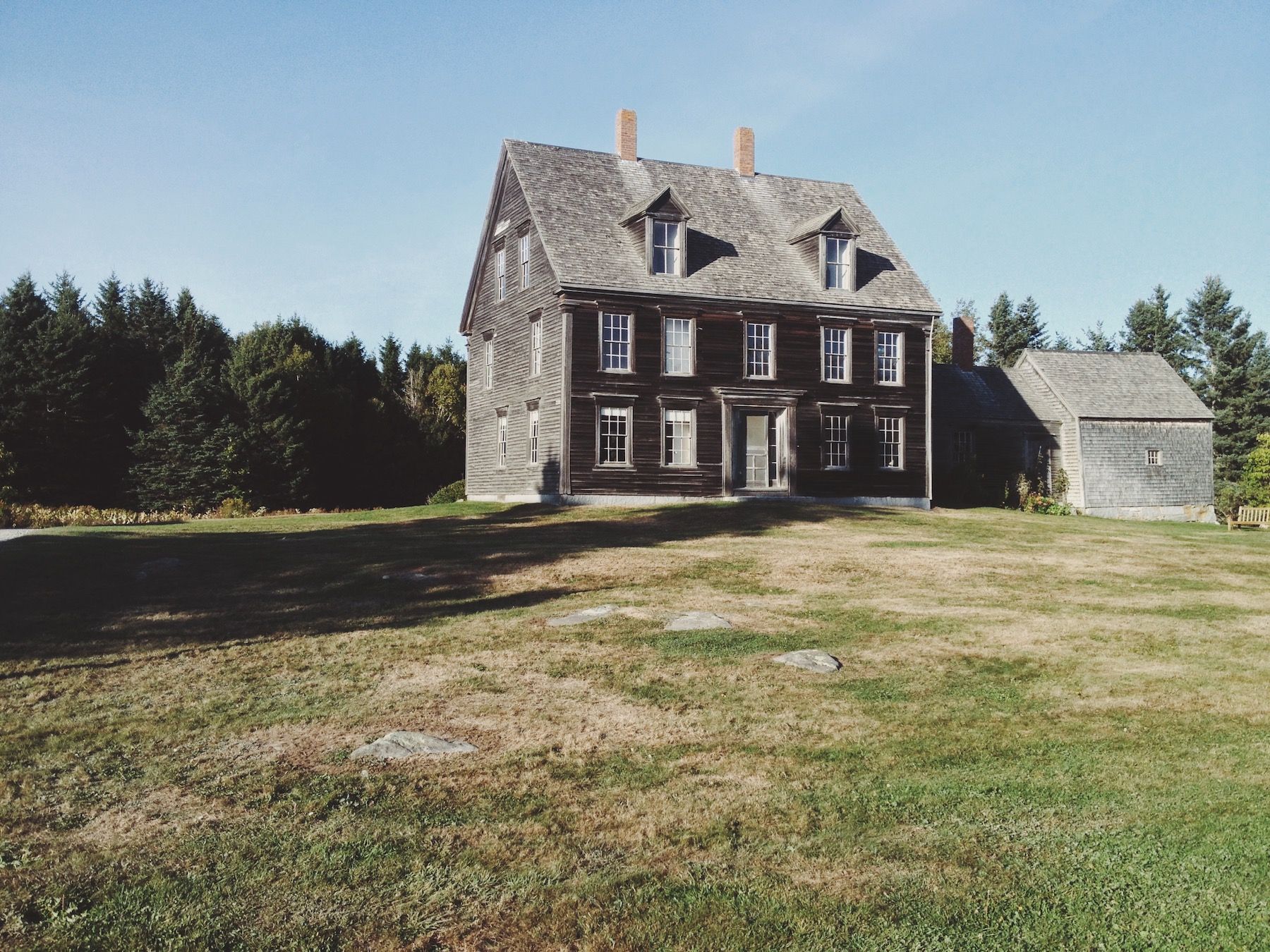Went road tripping in Maine this week. When I was in Rockland I happened to pass by the Farnsworth Museum, which has on display an exhibit called The Wyeths, Maine and the Sea. The ticket included admission to the Olson House, twenty minutes down the road; the house in Andrew Wyeth’s Christina’s World, which of all the paintings at the MoMA is the one I have spent the most time with.
The inside of the house is sparse, like walking into a still-life. Quietude is the word that comes to mind. An occasional vase or scatter of floral buds on the windowsill, and a handful of walls with small plaques of Wyeth paintings of the view out the window, when you could still see the ocean on three sides.
Here is a shelf of seashells. This room used to be filled with them. Visiting sea captains would bring as gifts shells from all over the world. The ones on display now aren’t originals, most of the contents of the Olson house have been long sold, auctioned off after the famous Hollywood producer tried turning it into a Wyeth museum only to close it two summers later due to complaints from the locals about the hundreds of thousands of visitors that flooded the small town.
Go up one floor. Many rooms are empty save for a single chair, or an empty crib, the one that Christina Olson grew big in. The sparseness makes a subject of the angular sunlight coming through the paned windows, the light that is so present, ethereal, at times cutting, in Wyeth’s paintings. I think to myself: How can you be in this house and not be a painter.
One north-facing room on the third floor is completely empty. Wyeth painted Christina’s World here. You can see the floorboards worn bare where he would walk back and forth from his easel. One day from the window Wyeth saw Christina crawling in the field toward the house, maybe after visiting the family cemetery. Crawling because from a young age she had had a neurological disorder that hindered her movement, yet she refused to use crutches or a wheelchair. Instead she would crawl, everywhere, often from the pile of blankets on the floor in the first floor room where she slept to her favorite place to sit, a chair at a desk in the kitchen, near the wood-burning stove.
After the tour I walk outside to take the picture above. The hill in Christina’s World does not exist. In person the land is mostly flat, and it was in Wyeth’s day, too. The barn is much closer to the house. “People called him a realist painter but he was more of a poet,” said the guide. He’d compose his paintings to represent an internal reality. The house in the painting is the Olson’s but Christina has the body of a younger woman – Andrew’s wife Betsy. And the hill is his father N.C. Wyeth, a renowned book illustrator in his own time, who raised Andrew and shoved Thoreau and Emerson into his hands and taught him to paint. Whose car stalled on a set of train tracks and was run over, three years before Christina’s World. Wyeth would later say that everything is metaphor whether the person looking at the painting realizes it or not; whether the artist realizes it or not. You don’t need to understand the reference for it to affect you. You still feel, without knowing why.
